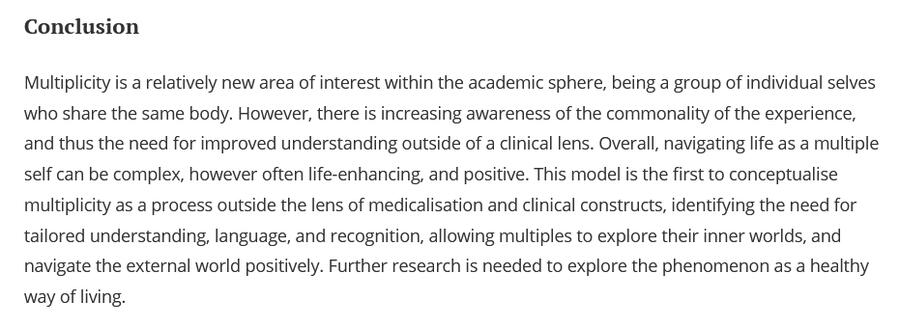Sources on Endogenic Plurality
if theres any problems or you want to suggest a study send an ask at @wired-arteries on tumblr! thanks!If you are an anti-endo who has been sent this, hi! Please actually read some of these papers before dismissing this page. Even if they dont change your mind entirely they may get you interested in learning more about the subject and about psychology in general.Some of these sources are paywalled, so to post them ill be using sci-hub and z-library, youll need to use tor browser if either of those sites are blocked in your area. I will still be posting relevant screenshots alongside the sources, but sometimes if you want to view them yourself youll have to do this.
Intro
I'd like to preface this by addressing some common misconceptions that people have when discussing endogenic plurality.
Endogenic plurals claim to have DID - This is simply not the case for most, perhaps some do obtain diagnoses as trauma is not in the specific diagnostic critera; however, all studies and research here will still point to the fact that DID/OSDD and other CDDs are caused largely by childhood trauma. But, they show it is possible for plurality to exist outside of DID/OSDD in a similar fashion.
Endogenic plurals are taking terms from traumagenics - This can sometimes be the case, but most endogenic plurals stay away from medicalised terms. Plural was actually coined as an anti-psych alternative to multiple, and was always meant to be used by endogenic plurals. System is a term that orginates in academic literature on mainly DID, but has been used to describe both endogenic & traumagenics for over 30 years at this point.
Endogenic plurality is entirely spiritual - This is also not the case, and even in cases where experiences are spiritual there is often an underlying psychological cause. Many studies here will look at spiritual practioners, but they are specifically researching the dissociative & psychological phenomenon behind this behavior.
Researchers views
This section will list some occasions when researchers or other important figures have mentioned/endorsed endogenic plurality.
Onno van Der Hart & Ellert Nijenhuis' views on plurality outside of trauma
Link
Description: The relevant section here is at the very bottom of this article, here they talk about plurality outside of trauma in mediumship and hyponosis. It is interesting to not that these professionals were largely the authors behind the Haunted Self & the main traumagenic "theory of structural dissociation", the fact that they support this idea, says a lot.
Screenshots:
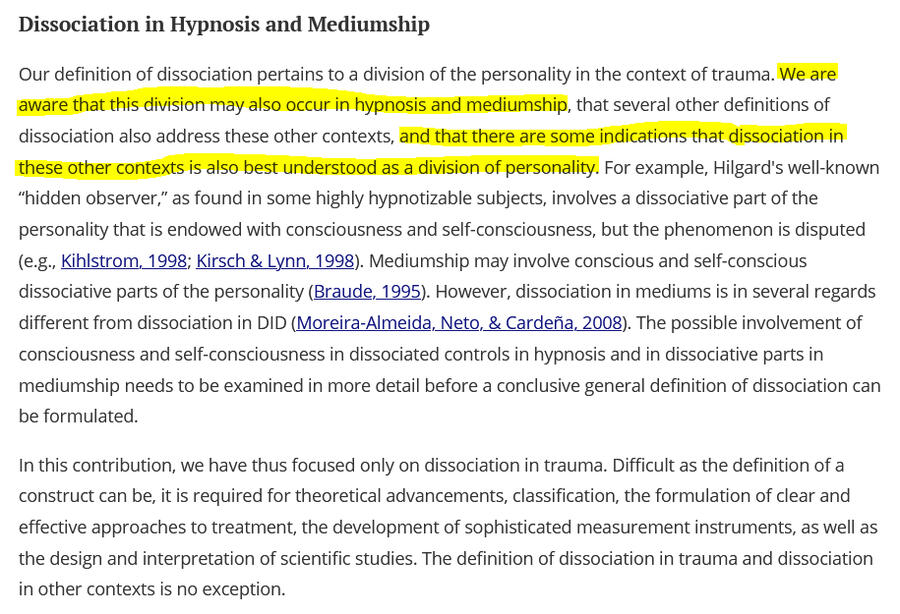
Dr. Colin Ross' views on plurality outside of trauma
Link
Description: Tumblr user sysmedsaresexist emailed Dr. Colin Ross about this subject, his answer was quite clear in saying that people with parts and no trauma can exist. Ross is a very respected and knowledgable professional in this subject.
Screenshots:
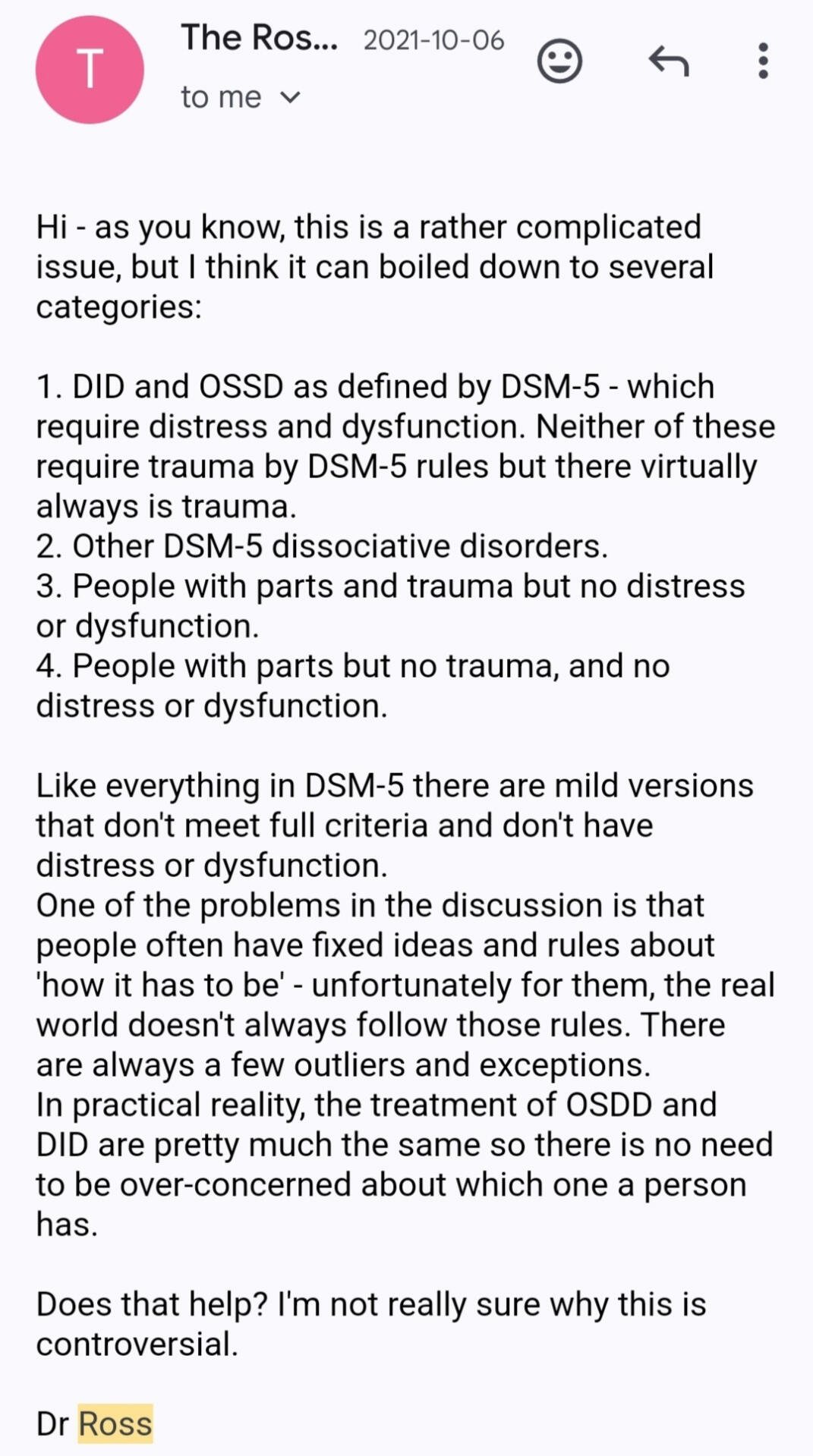
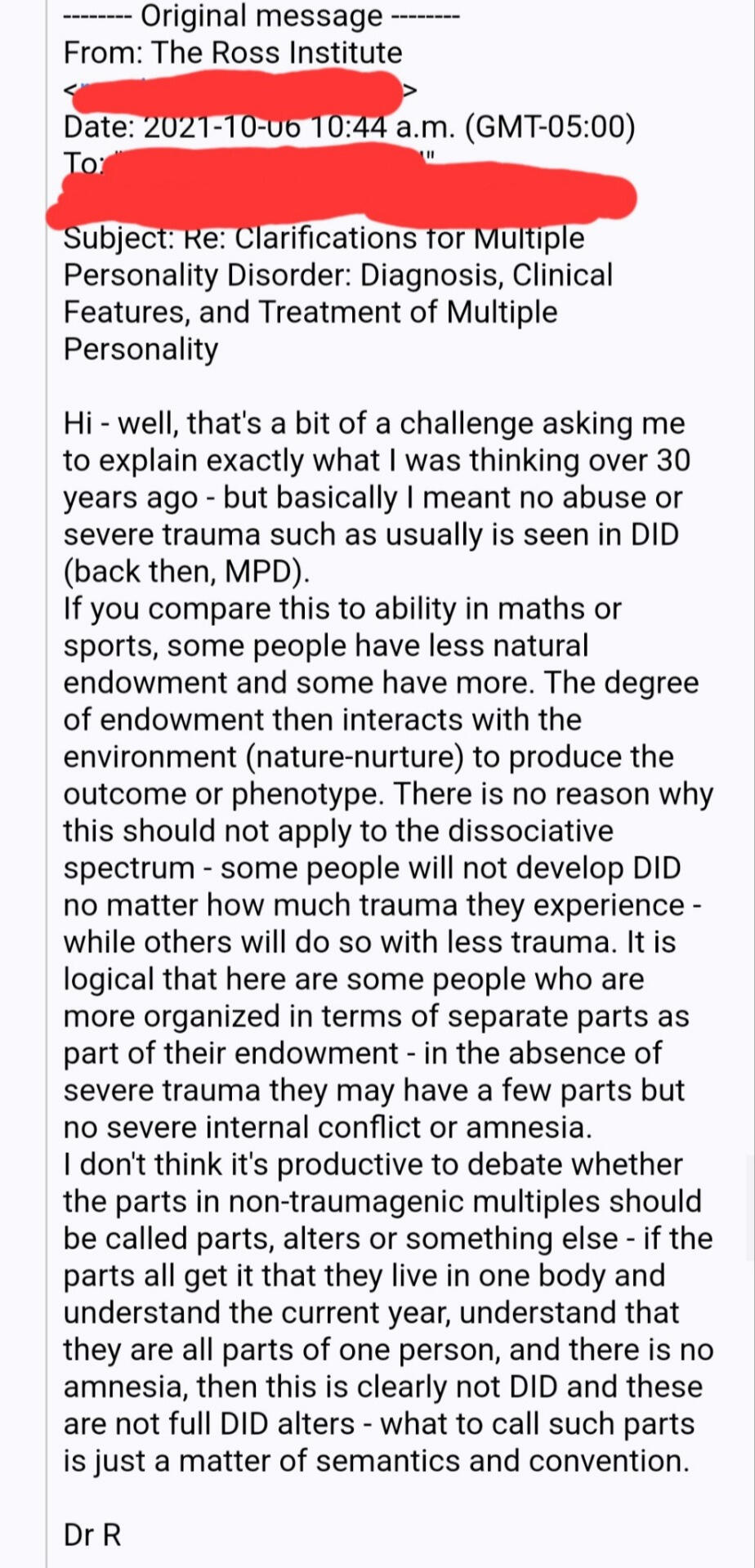
The ICD-11's view on non-pathological plurality
Link
Description: The ICD-11 is the manual used by many countries in the world to diagnose conditions and diseases, the ICD-11's page on DID contains a section called "boundary with normality" that discusses experiences that may appear like DID, but are not pathological and shouldnt be diagnosed as DID, the example used here is mediumship, but note that they use "e.g." denoting it is only one example.
Screenshots:

Studies, Articles, and Books
This section will list some studies, articles, and books that all mention endogenic plurality.
On Multiple Selves, By David Lester
Link (requires z-library)
Type: Book
Description: This book is fantastic for talking about plurality not just in DID but in many different situations. It mentions the theories of dozens of psychologists which include the experience plurality-- not just in DID or pathology --showing that this subject IS well studied. A lot of these experiences and theories are remarkably similar to what endogenic systems commonly purport online as I will show in screenshots below. Even though there are screenshots i implore you to access this resource yourself, it's great and has so many different viewpoints on this subject.
Screenshots:
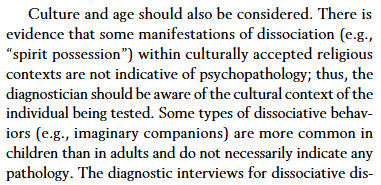
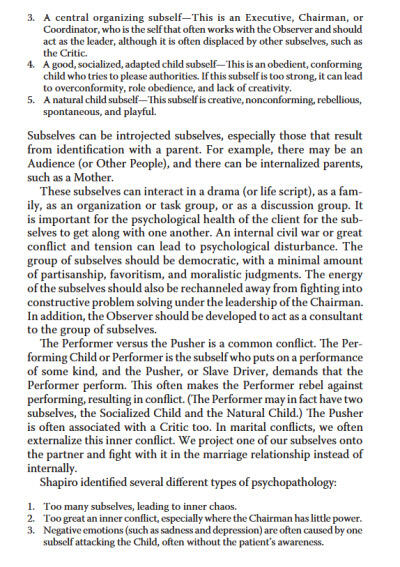
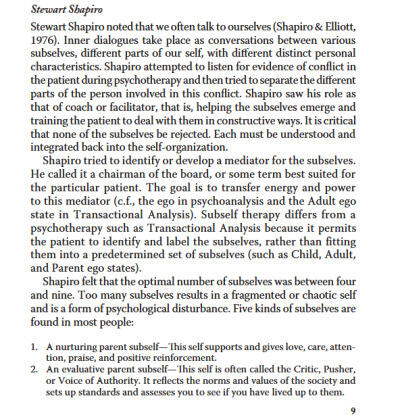
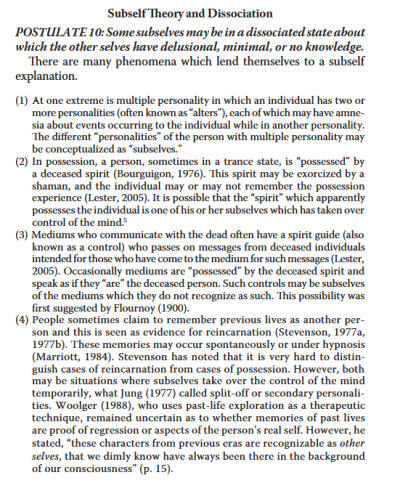
The Plural Selves, by John Rowan
Link (requires z-library)
Type: Book
Description: Book about plurality in general and the different theories around it. Contains a chapter by Colin Ross. Interestingly plurality is described in one part as a continnum from very normal altered states of consciousness to the disordered "multiple personality", though in between these states more states exist that may not be disorded but do contain a experience of plurality. Emphasizes that subpersonalities or alters can be an entirely normal experience.
In Colin Ross' section he quite literally says "One could have many different 'people' inside while experiencing no psychiatric symptoms at all"
Screenshots:
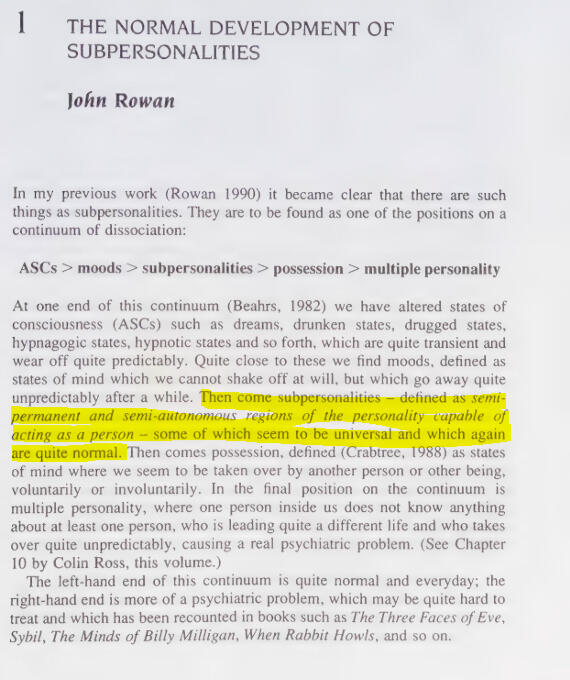
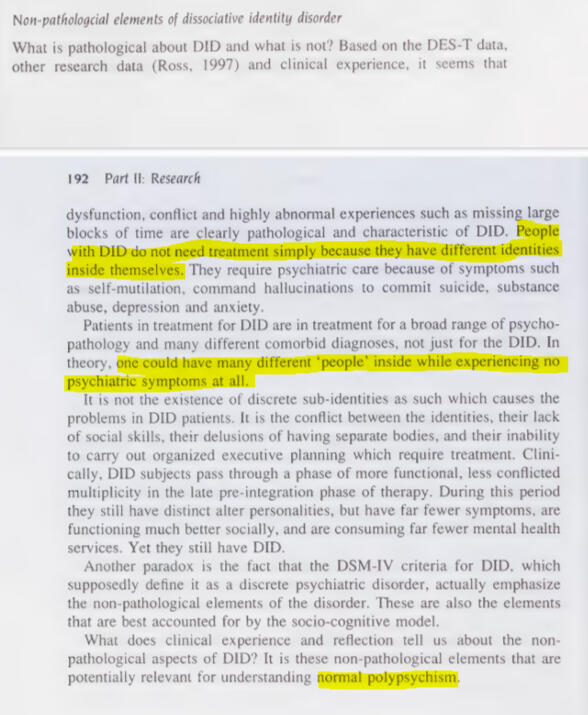
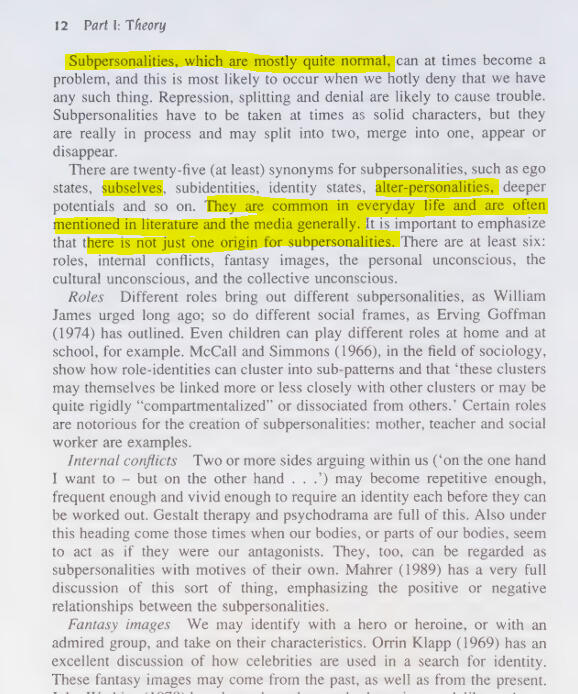

Comparison of brazilian spiritist mediumship and dissociative identity disorder.
Link (requires scihub)
Type: Study, interview & self report.
Description: Study about mediumship and a comparsion to those with DID, note that mediumship is being studied as a psychological dissociative phenomenon here and not particularly as a solely religious one, they are considering psychological explainations & factors. Though mediumship is often a spiritual experience I think the underlying psychological causes can be studied and equated to non-pathological/non-traumagenic plurality.
Screenshots:
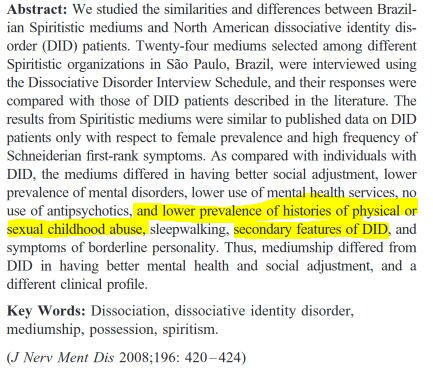

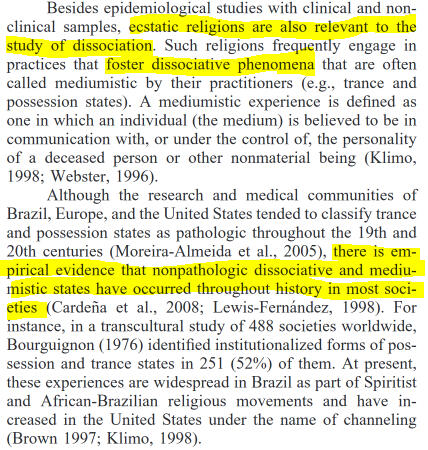
Conceptualizing multiplicity spectrum experiences: A systematic review and thematic synthesis
Link
Type: Literature Review
Description: This literature review looked at 13 articles on the subject of endogenic plurality and selected some key themes based upon those articles. They conclude that endogenic plurality is a real experience seperate to the experience of DID/OSDD and DPDR, they also conclude that endogenic plurality deserves more research. Interestingly, they also use the word "system" in reference to endogenic plurals.
Screenshots:
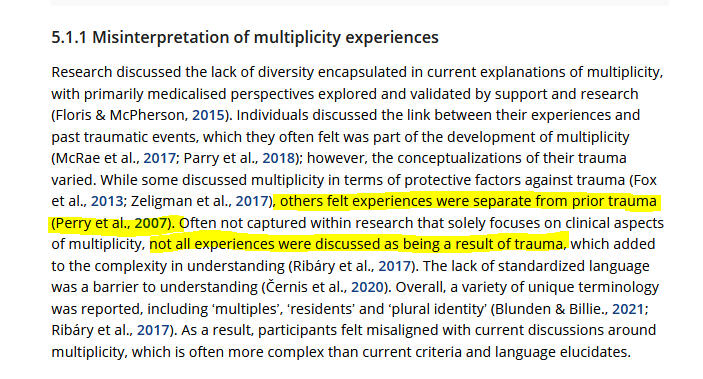
A cultural critique of the DSM-IV dissociative disorders section.
Link (requires scihub)
Type: Article
Description: Addresses concerns that the DSM-IV criteria for DID does not properly address non-pathological dissociation considered a part of normality in many cultures. Here it mentions that in some cultures dissociation in rituals and practices is normal and not pathological. I believe that this same view could also be applied to types of western endogenic plurality, as these also could be influenced by cultural factors as a form of dissociation that is not pathological.
Screenshots:
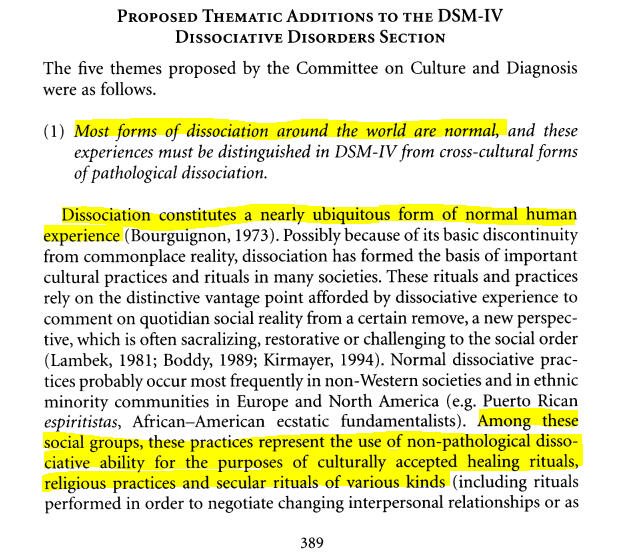
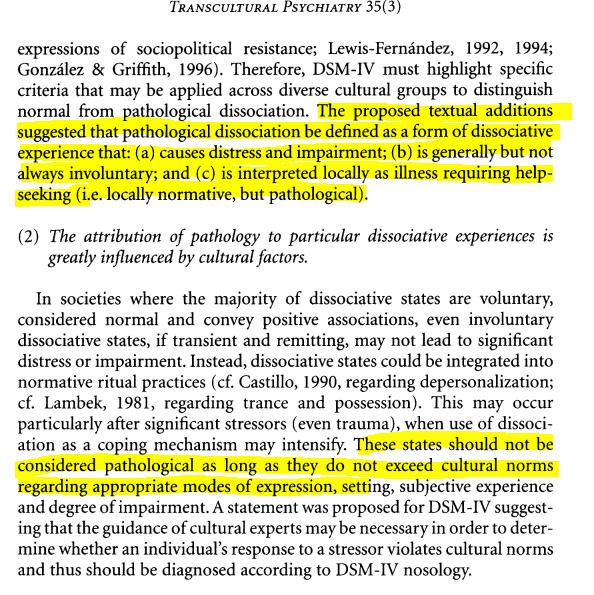
Tulpas and Mental Health: A Study of Non-Traumagenic Plural Experiences
Link
Type: Study, survey/obversational based.
Description: Survey was sent out to multiple websites with users who practiced "tulpamancy", 62 responses are used in this study to formulate conclusions. 56% claimed to be diagnosed with mental illness, 78% claimed that their tulpa had helped their mental state, with no respondents saying that their tulpa had decreased their mental state, showing that tulpas are likely non-pathological and do not cause harm.
Screenshots:
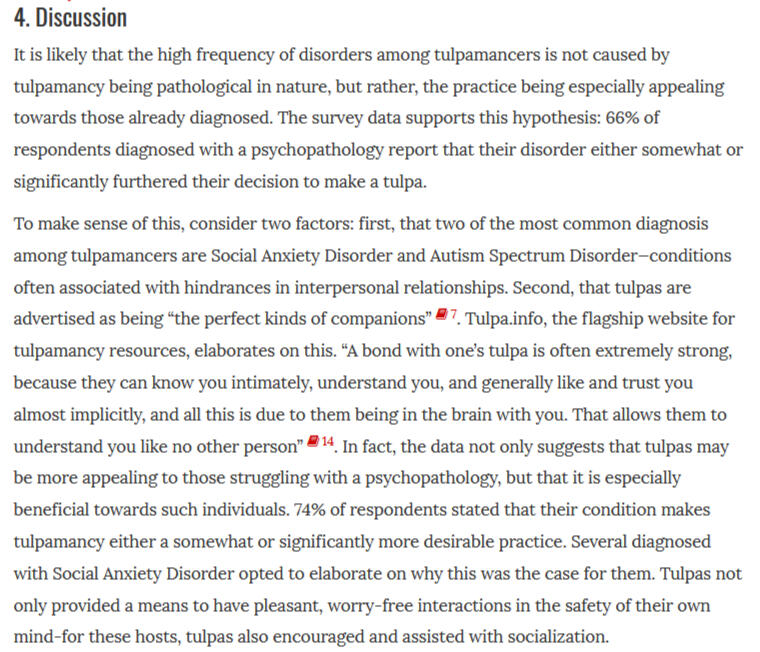

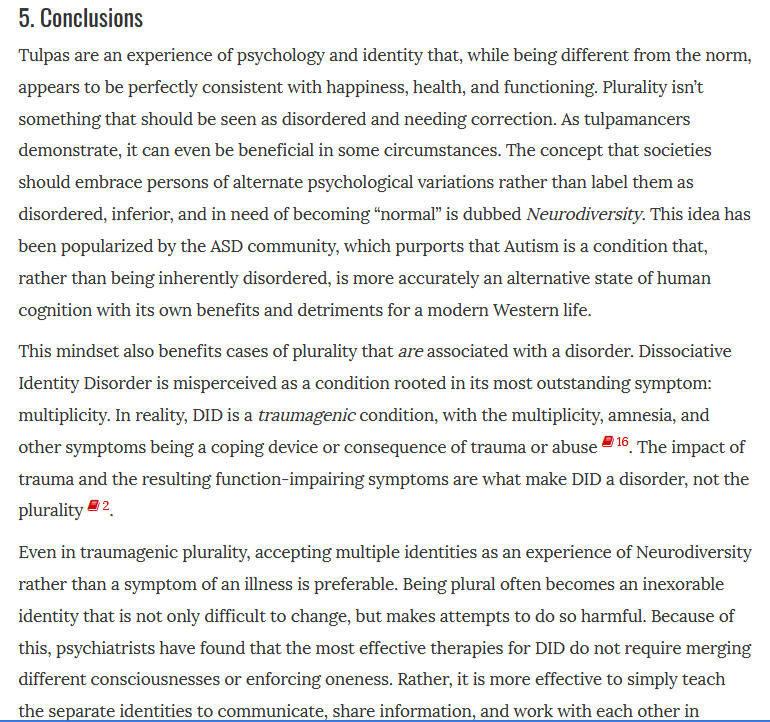
“Here’s Dissociative Identity Disorder, and we’re not that”: a constructivist grounded theory exploration of multiplicity experiences
Link
Type: Study, survey/interview based.
Description: This study interviewed many people who identified as multiple mainly non-pathologically. They emphasise that DID is not the same as this multplicity experience. They conclude that there are four categories of important factors that may contribute to how multiples feel and conceptualise themselves.
Screenshots:
